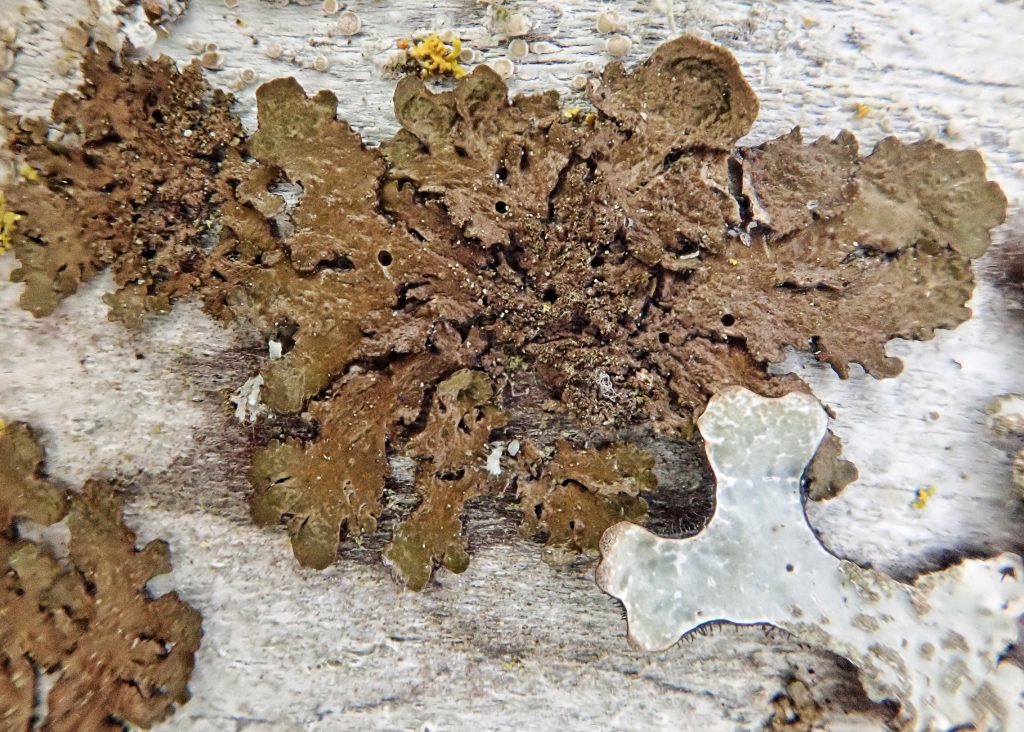
I have been reluctant to profile any of the former members of the clade ‘Parmelia section Melanoparmelia’ because it is important to know whether it has isidia or soredia (a simple lichen glossary can be found here for other unfamiliar terms) or both, and the isidia in this group often break down into very soredioid looking clumps. Nonetheless, I have been more or less correct in my identification of this taxon over the last few years. I say ‘more or less’ because I’ve been calling it by its old name, Melanelixia fuliginosa, which has been determined to be applicable only to the specimens found in Eurasia. The proper name for our North American taxon is now M. glabratula, although it is also present in Europe. I am grateful to my friend Trevor Goward for confirming both the identification and the etymology of the scientific name, and for supplying me with a wonderful common name for this species, Polished Camouflage Lichen.
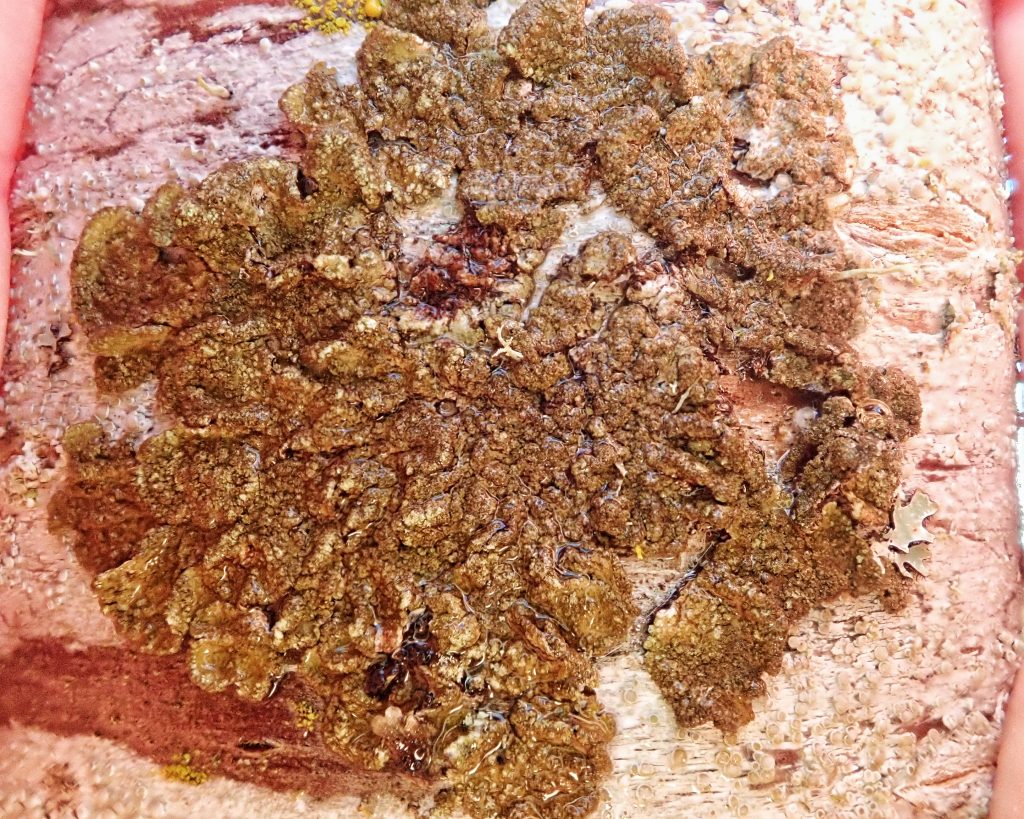
Lichens, and fungi in general, have undergone extensive taxonomic revisions because of the ability to determine chemical composition by using thin-layer chromatography, and doing multigene molecular studies. My guess is that that is because the immense morphological plasticity in these groups has made it hard to discern what is normal variation within a species, and what constitutes a different taxon, although it is also common to be able to better differentiate morphological traits of a particular clade once molecular data has exposed its segregation. This is certainly true for the greenish/brownish former members of Parmelia section Melanoparmelia, although many of those morphological traits are only readily visible with an electron microscope. For fuller discussion of the taxonomy of this group see Banco et. al. (2004) and Arup/Sandler Berlin (2011).
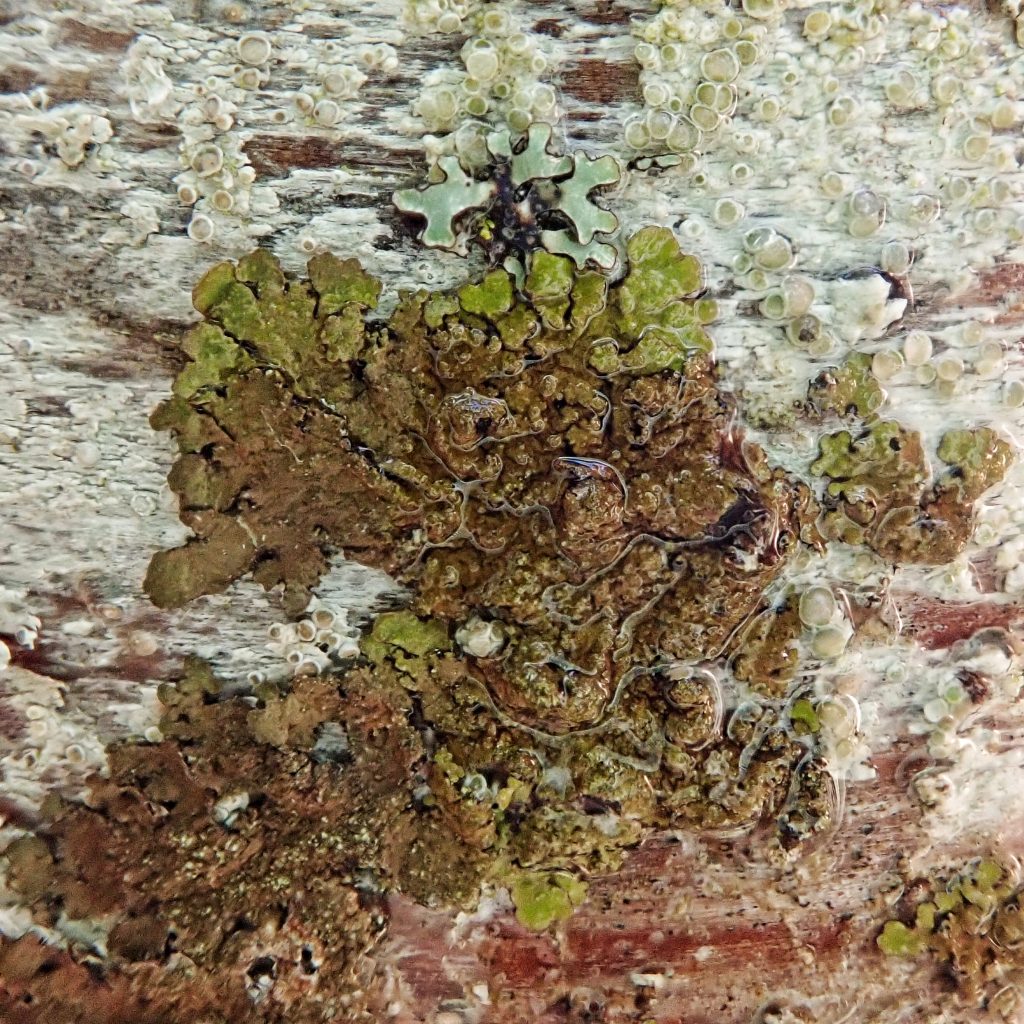
Melanelixia glabratula is a common species on street trees and other lowland hardwoods west of the Cascades. Older parts of the thallus tend to be a fairly dark brown, while the lobes are usually a dull to shiny olive green, and I don’t recall ever seeing a thallus that was more than 3” in width, so this lichen doesn’t exactly pop, which may be the origin of the common name Polished Camouflage. Though I don’t claim to understand the math involved, it was clear from this study (Agnan, et al;2016) that Polished Camouflage falls out right in the middle of the pollution tolerance/sensitivity scale, which is just what I would’ve expected from a lichen that is common in both urban and much less human impacted areas.
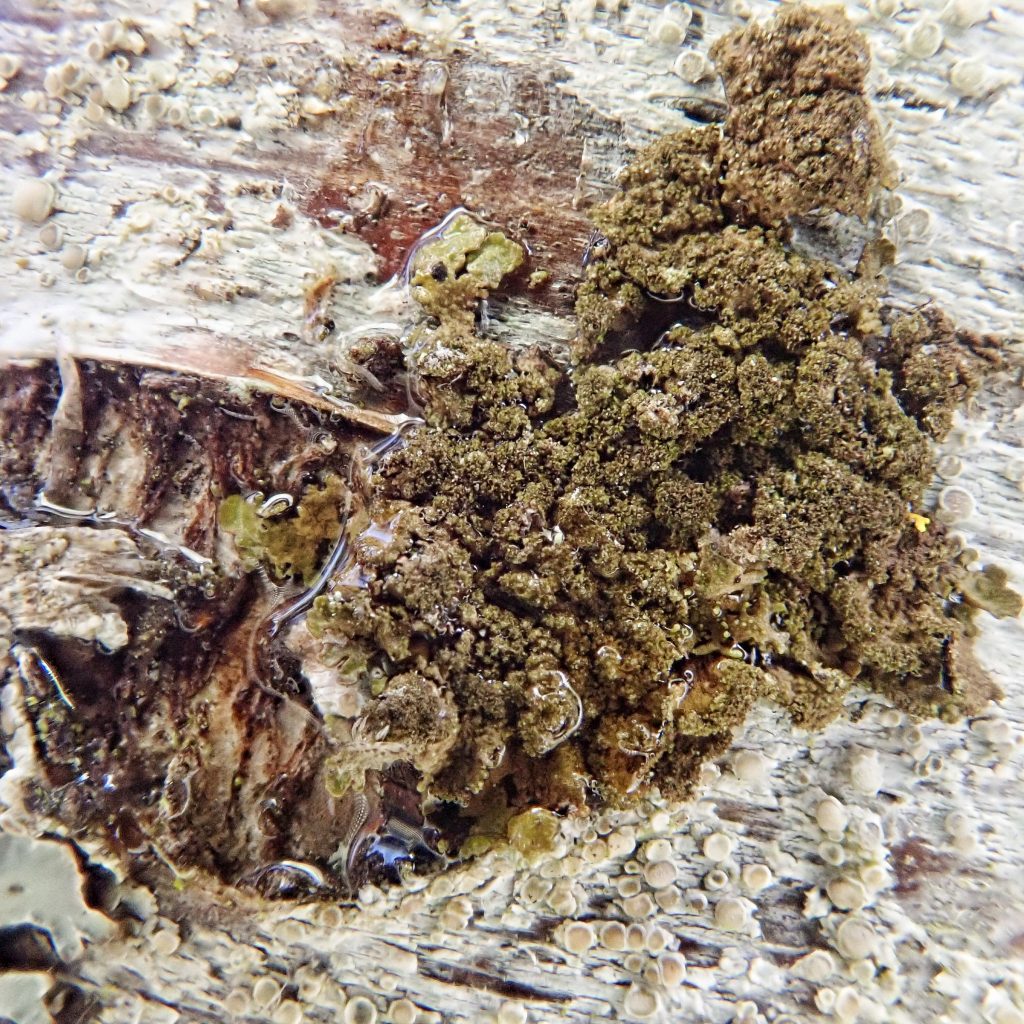
Many members of the family Parmeliaceae, including Melanelixia glabratulata, produce the secondary metabolite lecanoric acid (which is the reason for the C+red/orange spot test reaction- for more on spot tests of lichens see here), and a study (Cernajova/Svoboda; 2014) showed that it deterred, although it did not eliminate, grazing by certain arboreal gastropods. It seems that that might be a fruitful place to look for substances that could discourage slugs and snails from ransacking people’s gardens.
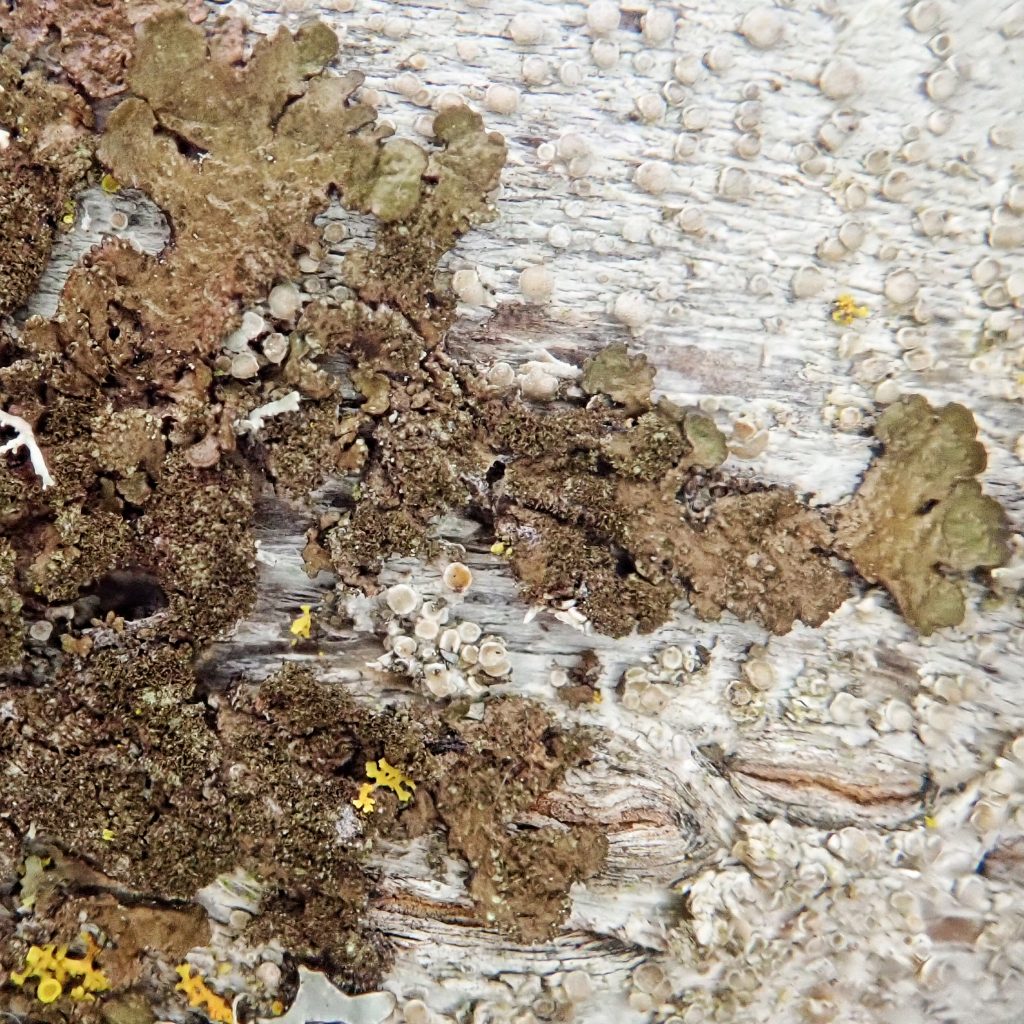
Description-Small to medium sized (lobes 1.2-2.8mm wide) olive green to brown foliose lichen with no soredia and abundant isidia (though they sometimes appear soredioid); lacks marginal lobules and apothecia; thallus hairless; medulla C+red/orange;
Similar species-All greenish/brownish foliose lichens are best differentiated using magnification and a key, such as this one; Melanelixia subaurifera has both isidia and soredia; Melanohalea sp. and Montanelia sp. medulla are C- ; Melanohalea subelegantula and M. exasperatula have isidia which are often marginal and form lobules; Melanohalea multispora and M. subolivacea have apothecia.
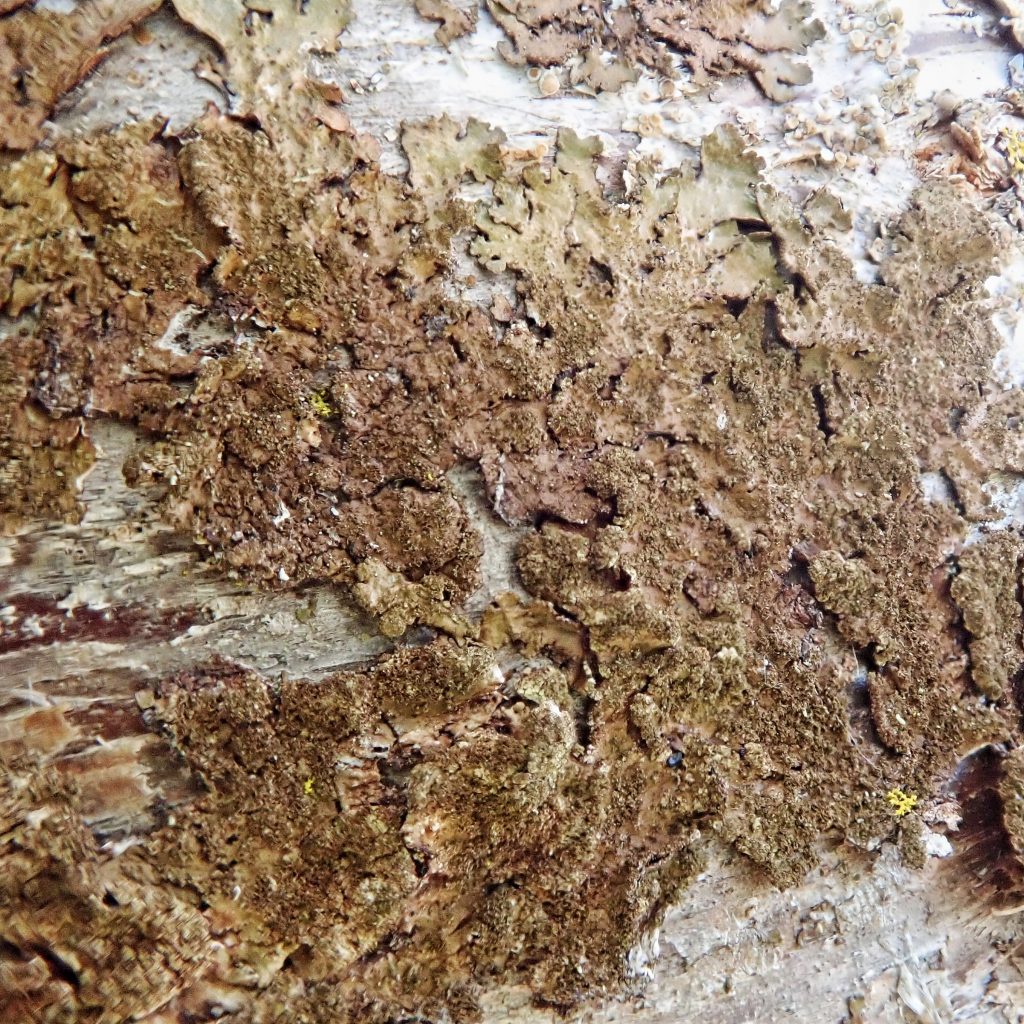
Habitat-On the bark of hardwoods in moister environments west of the Cascades, and often found on rock on the eastside.
Range-Holarctic, extending south into the eastern and western US; region wide in the PNW.
Reproductive timing-Rarely reproduces sexually, but almost always has isidia which are capable of asexual reproduction.
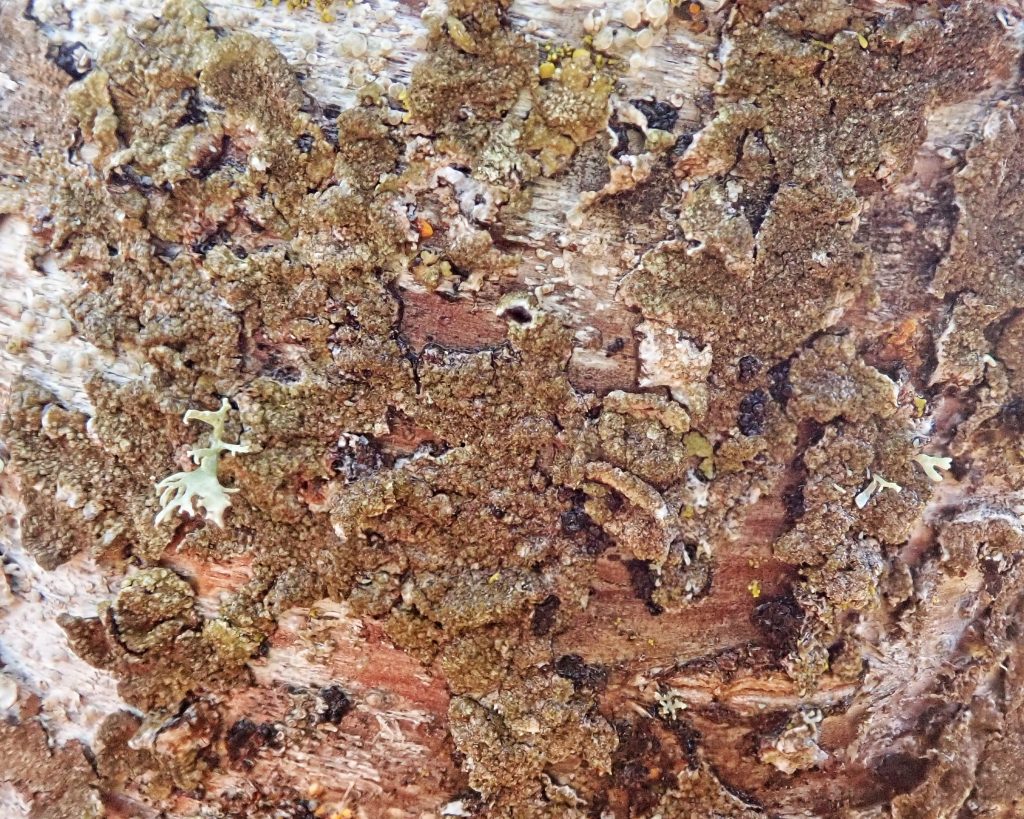
Eaten by– I can find nothing specific for this lichen, but it is likely eaten by the larvae of the moths Clemensia umbrata and Hypoprepia miniata, as well as other lichen eating moths; various slugs, snails, woodlice, springtails, and millipedes are known to consume lichens; probably beetles in the families Leiodidae, Staphylinidae, Endomychidae, Tenebrionidae, and Erotylidae; and some fungus gnats (Sciaridae).
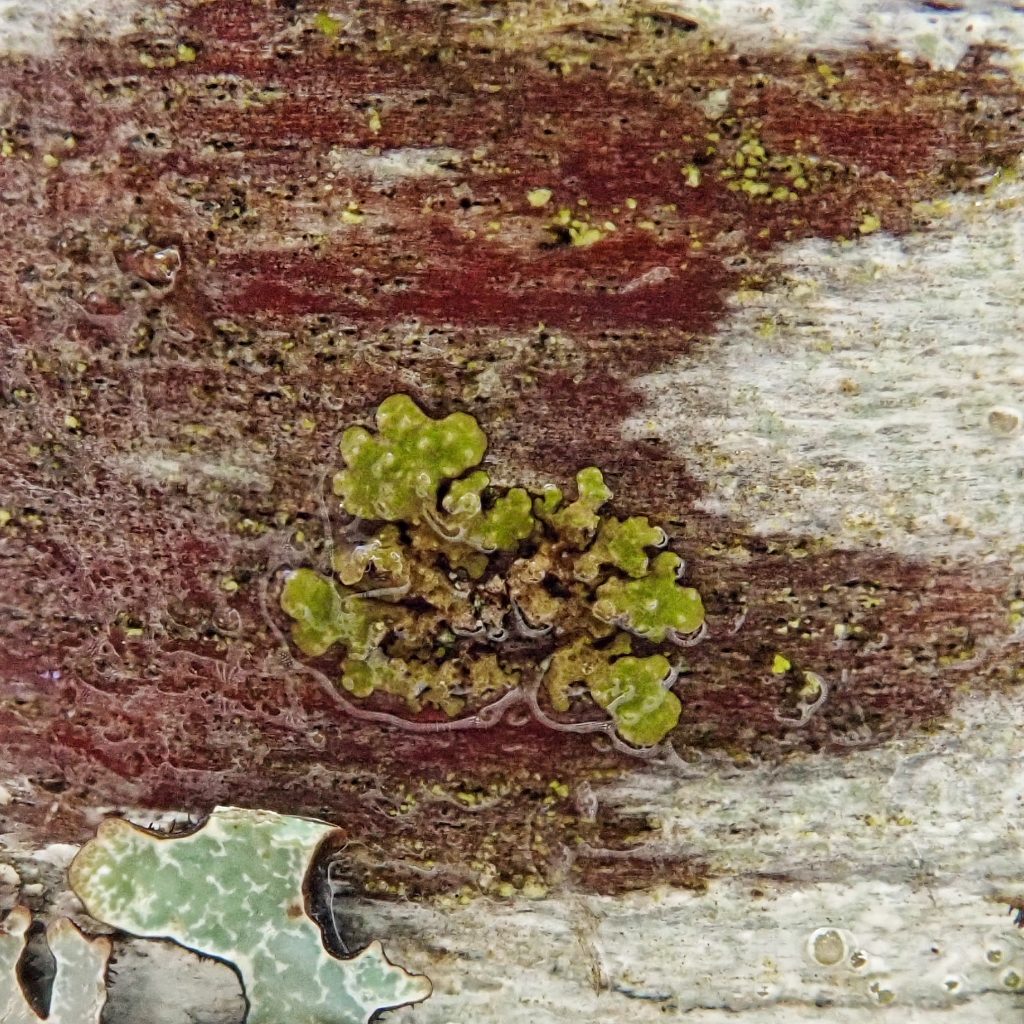
Etymology of names–Melanelixia is from the genus Melanelia, from which it was segregated, plus it honors the lichenologist John A Elix. Melanelia is from the Greek for black, though in this case it refers to dark pigments in the thallus. The specific epithet glabratula is from the Latin for ‘hairless’, and refers to the hairless thallus of this species, with a nod to its similarity to the species M. glabra.
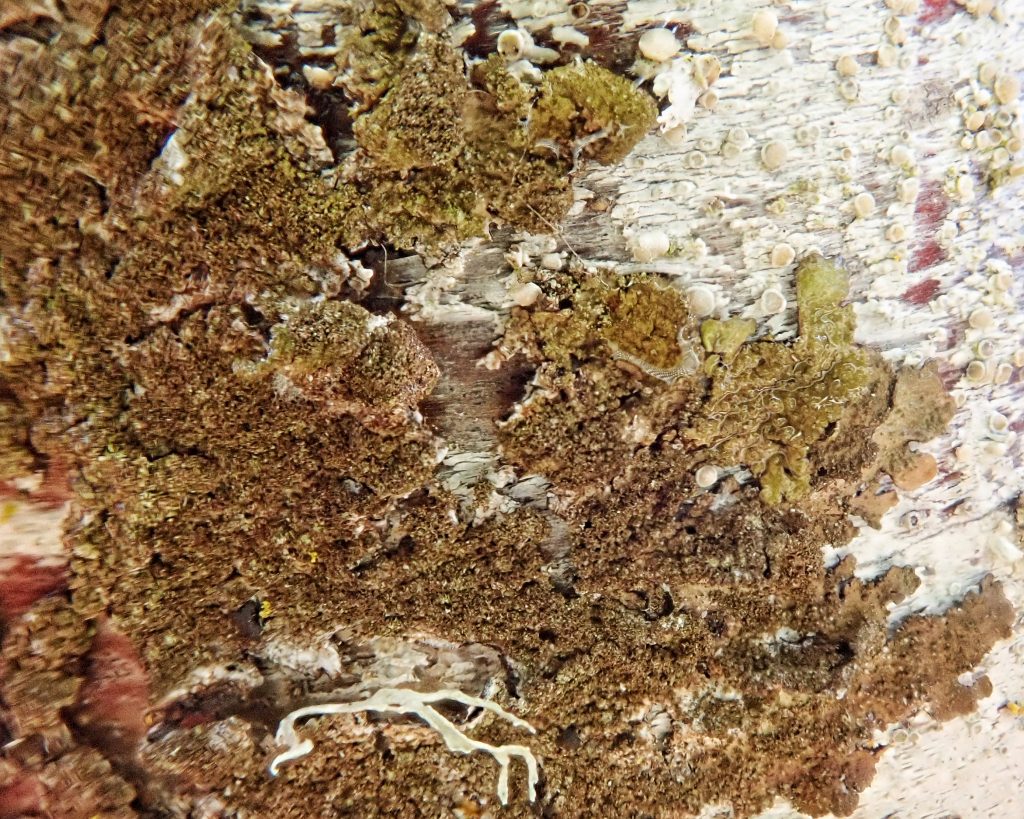
https://lichenportal.org/cnalh/taxa/index.php?tid=66238
https://www.naturespot.org.uk/species/melanelixia-fuliginosa-subsp-glabratula
https://nhm2.uio.no/botanisk/lav/RLL/PDF/Blanco%20et%20al.2004Mycological%20Research.pdf
https://sci.bban.top/pdf/10.1017/s0953756204000723.pdf?download=true
https://sci.bban.top/pdf/10.1016/j.funeco.2014.03.004.pdf?download=true
https://www.plantscience4u.com/2014/07/difference-between-isidia-and-soredia.html?m=1
Common Macrolichens of the Pacific Northwest
https://www.fs.fed.us/wildflowers/beauty/lichens/glossary.shtml
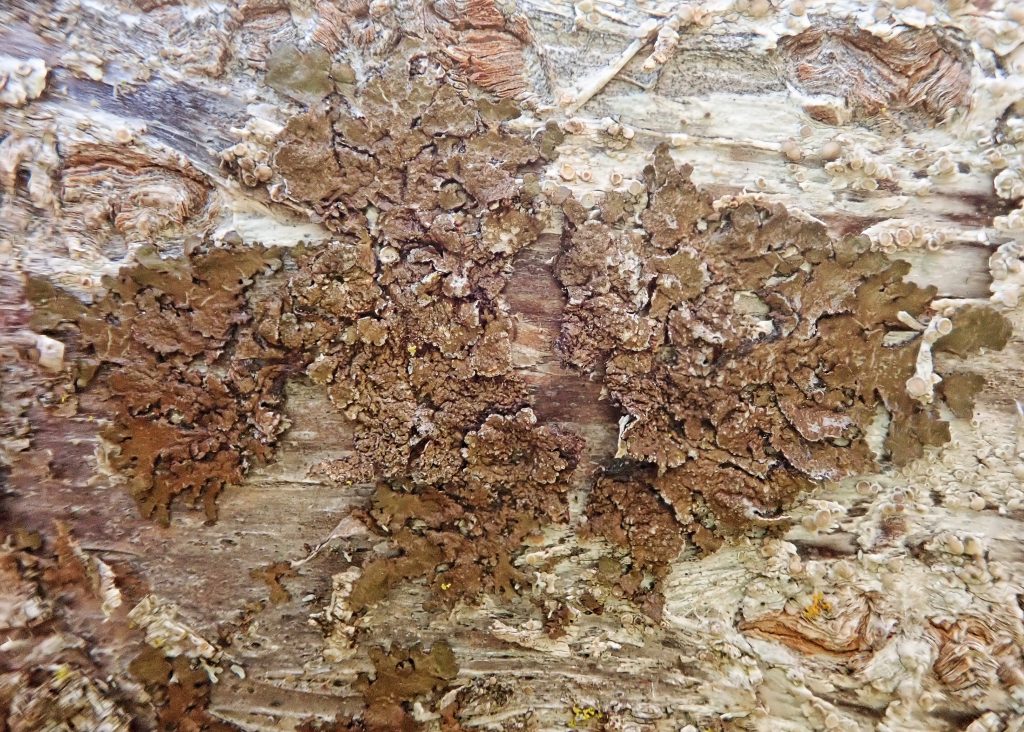
Well done Dan! As ever, I enjoy your take on things – scientifically grounded but with a certain personal panache.
I should mention that the link to Cernajova/Svoboda; 2014 brings up the Blanco paper.
Take good care.
Thank you Trevor! I fixed the link.